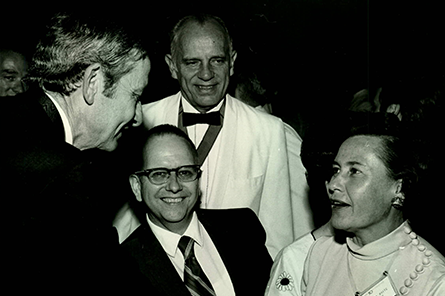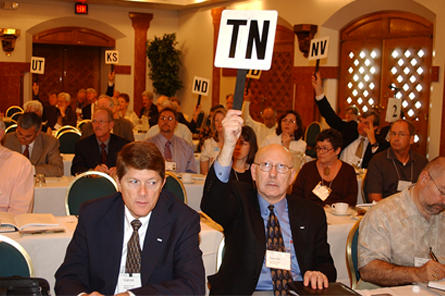Tennessee
Law Passed: 1921 • Joined NCARB: 1926 • Region 3—Southern (1963)
The Components of Licensure
Education
1921: Each year of study at an architectural school is considered equivalent to one year of experience.
1974: Tennessee adopts NCARB’s education standard, requiring applicants without a degree from a NAAB-accredited program to document 12 years of experience as an alternative.
1995: Applicants with a four-year degree in architecture from a program not accredited by the NAAB can document five-seven years of experience as an alternative.
2005: Tennessee allows applicants without a degree from a program accredited by the NAAB to have their education evaluated for equivalency.
Experience
1921: Four years of experience are required.
1974: Applicants with a degree from a NAAB-accredited program must complete three years of experience.
1984: The IDP is required.
Examination
1921: Applicants must pass an exam administered by the board.
1963: Tennessee begins administering NCARB’s national exams.
Noteworthy
Although the Tennessee Board didn’t exist at the time, NCARB was founded in May 1919 during an AIA Convention in Nashville, TN.
Landscape architecture was added to the board in 1979, and interior design was added in 1991.
In 1996, Tennessee began requiring continuing education for license renewal.
In 2002, the board was given authorization to award money for computers, laboratory or instructional equipment, library resources, or experience and examination fees to students in accredited architectural, engineering, landscape architectural, and interior design programs in Tennessee.
Notable People
NCARB Presidents
1935-36: Joseph W. Holman (Nashville)
1975: John M. O’Brien Jr. (Memphis)
Additional Members of the NCARB Board of Directors
1926-28: Henry C. Hibbs, FAIA (Nashville)
1993-96: William H. Beaty, FAIA (Germantown)
2002-04: Vance Travis (Chattanooga)



